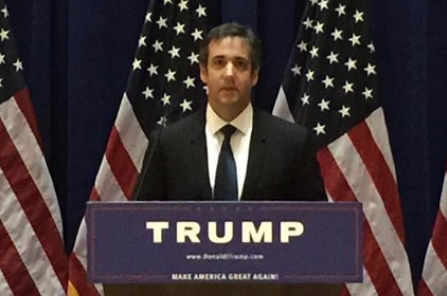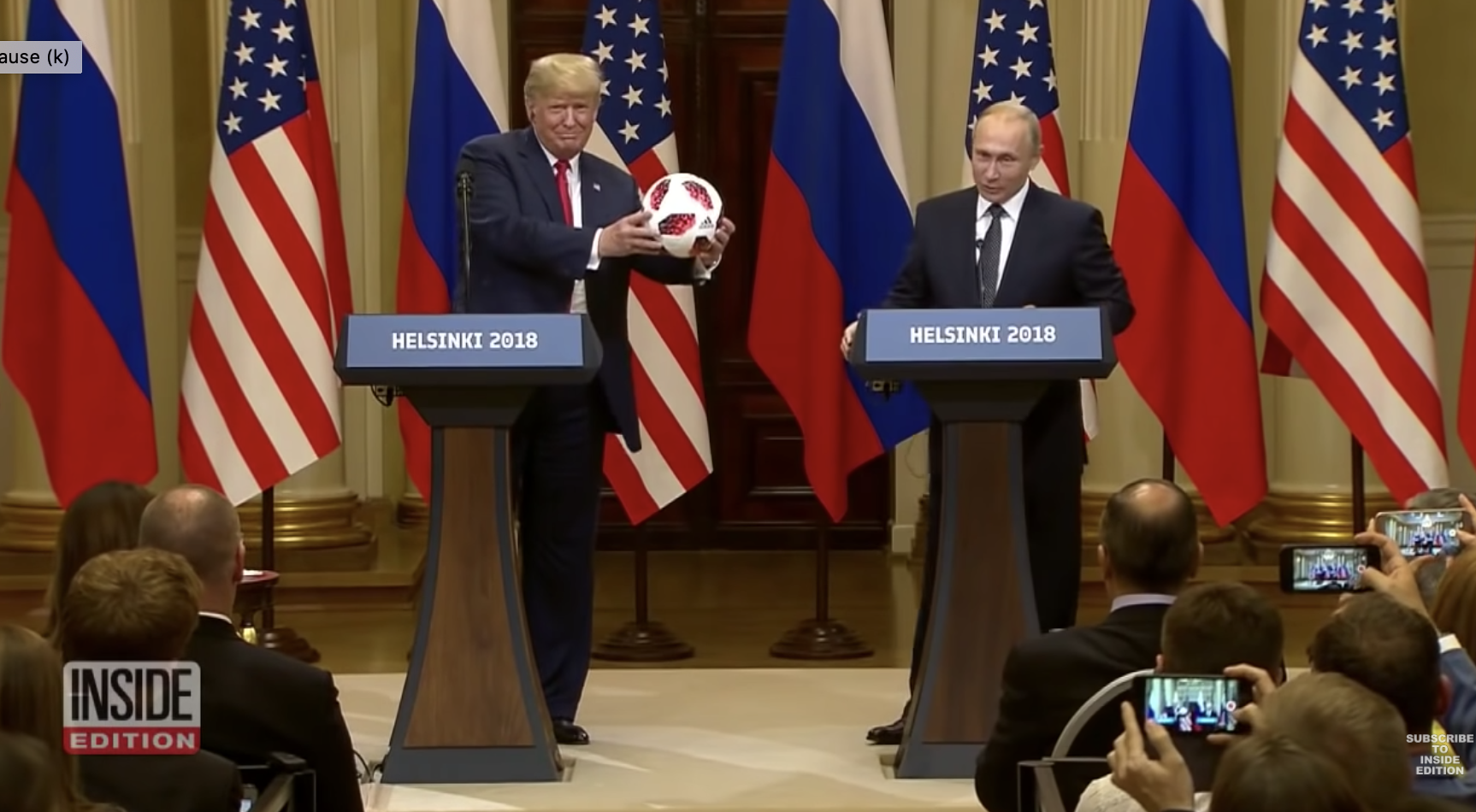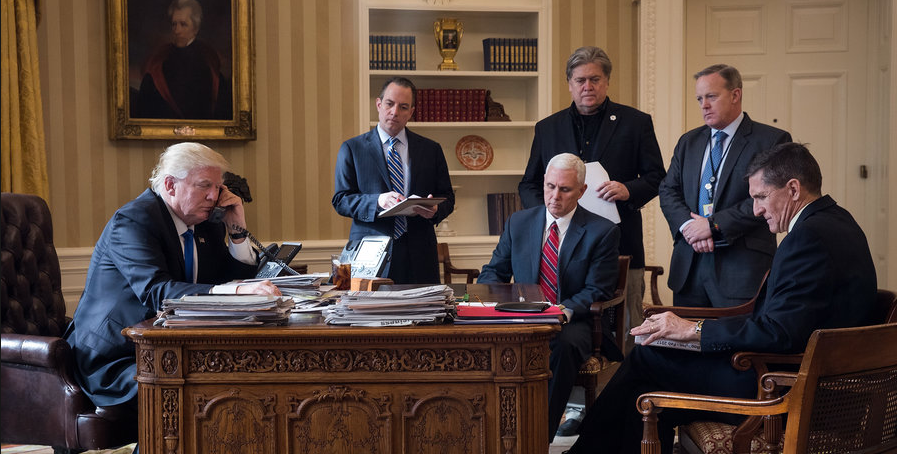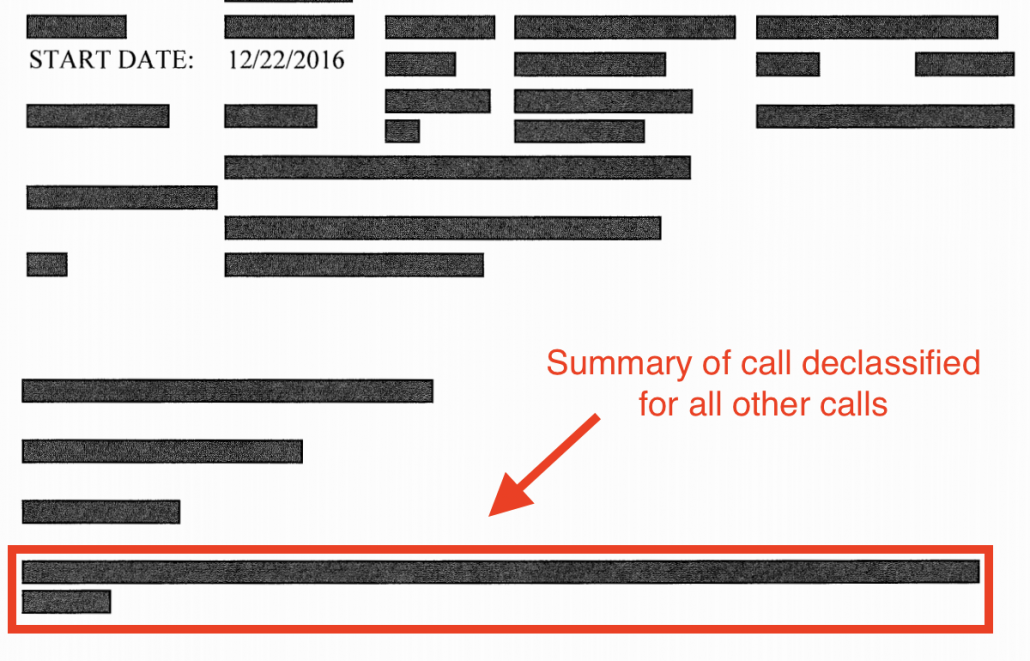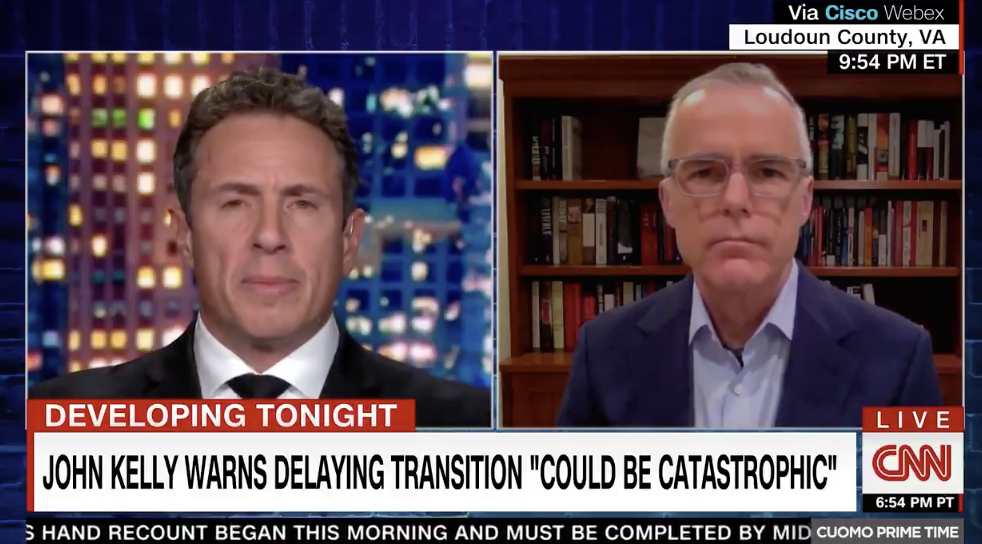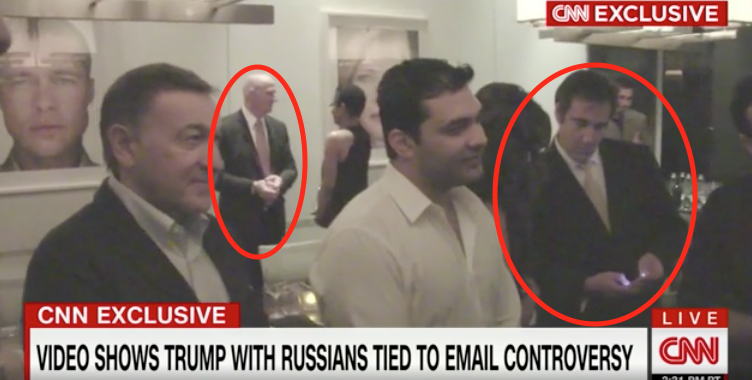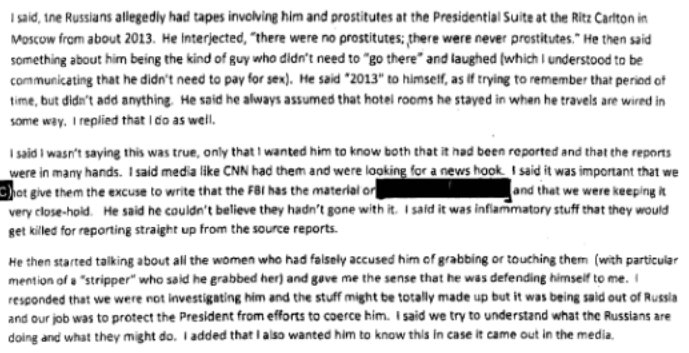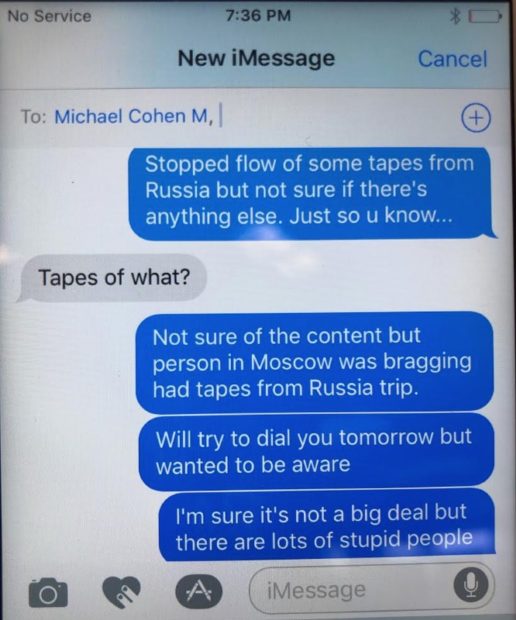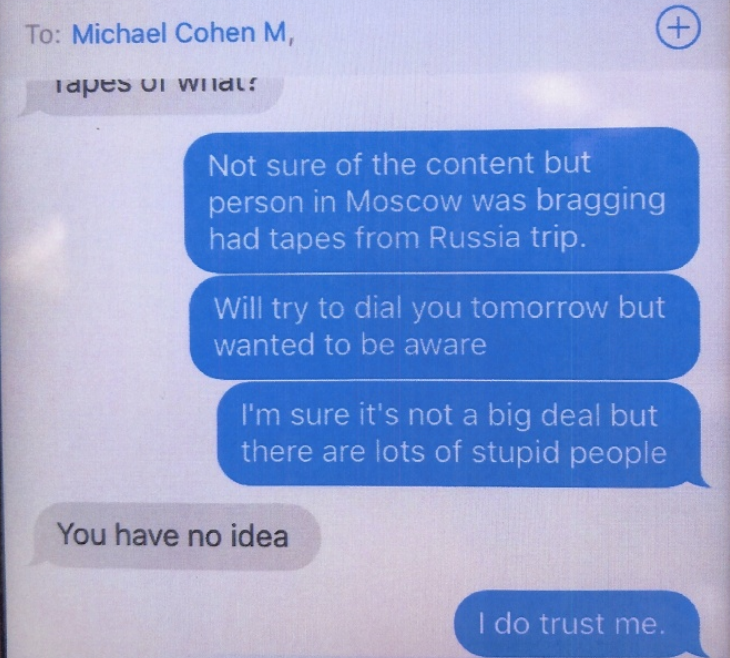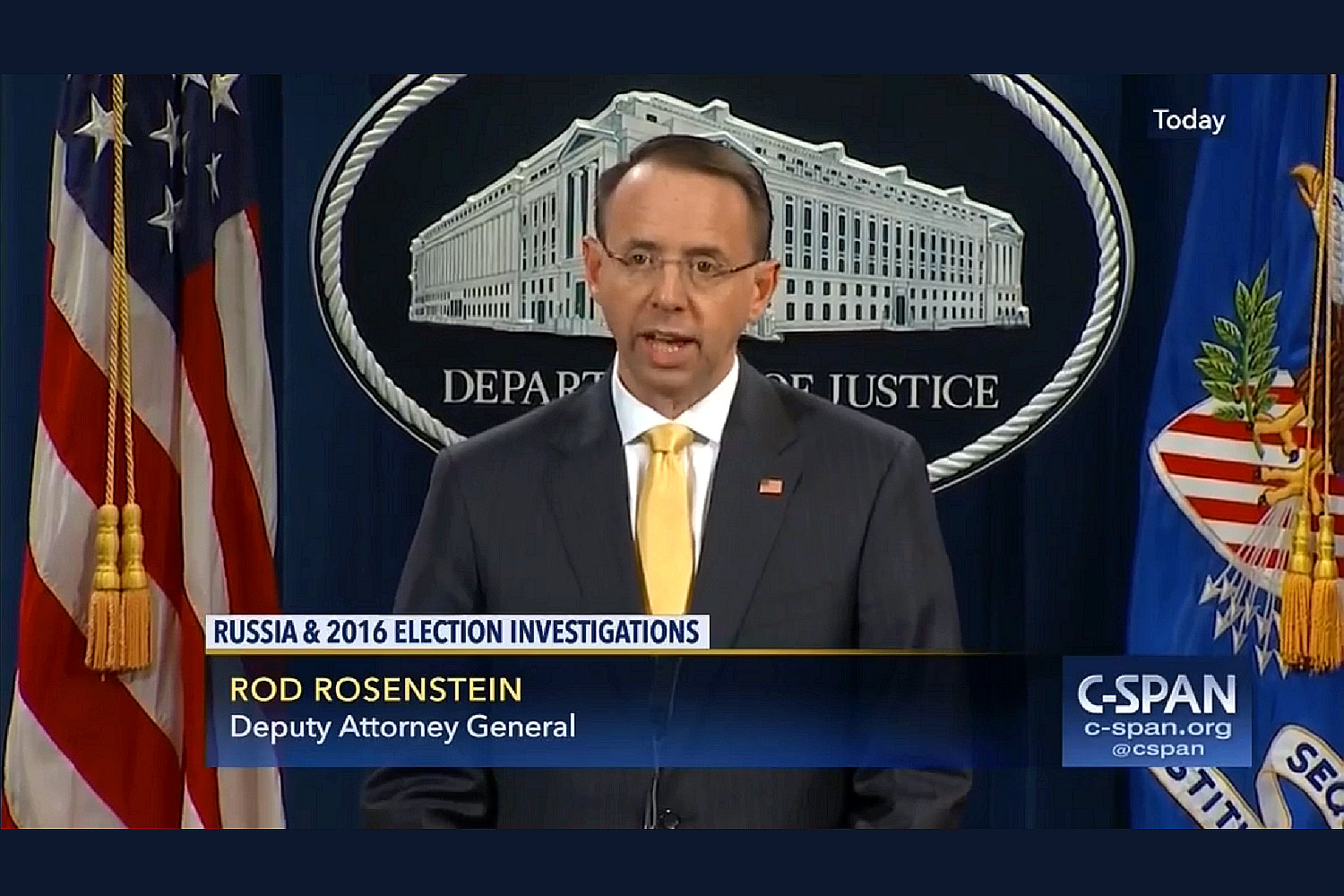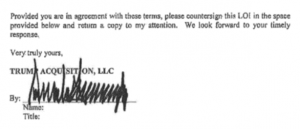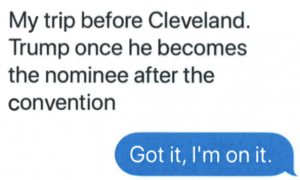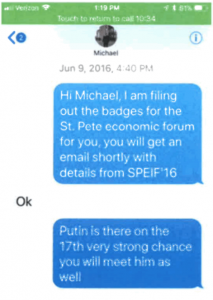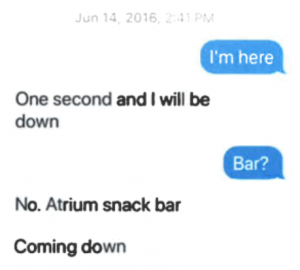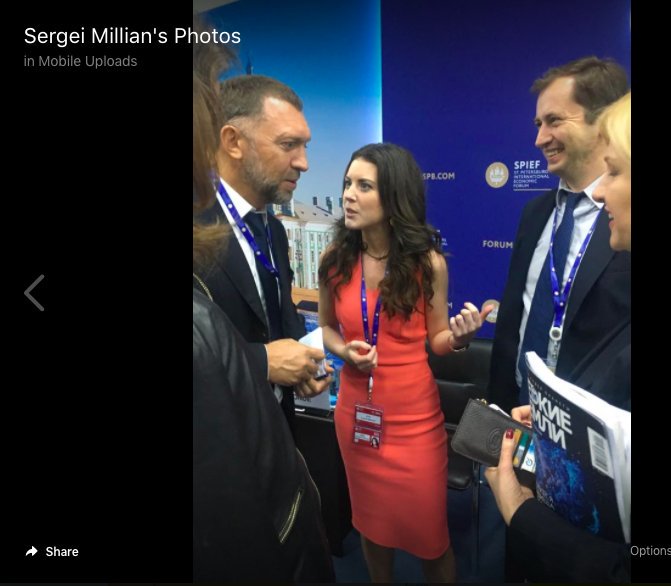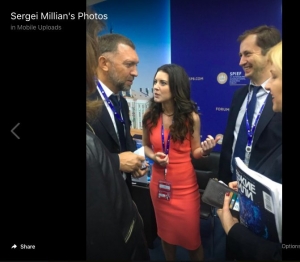The Guardian “Scoop” Would Shift the Timeline and Bureaucracy of the Known 2016 Russian Operation
Luke Harding has a story based on alleged Russian documents that show that Vladimir Putin personally approved of the 2016 Russian operation on January 22, 2016.
In advance of a known meeting — which Russia claimed at the time was convened to talk about Moldova — the Guardian claims Putin was presented with a plan on how an influence operation might work. Putin purportedly approved the operation at the publicly announced meeting. And then all three intelligence agencies implemented it.
The author appears to be Vladimir Symonenko, the senior official in charge of the Kremlin’s expert department – which provides Putin with analytical material and reports, some of them based on foreign intelligence.
The papers indicate that on 14 January 2016 Symonenko circulated a three-page executive summary of his team’s conclusions and recommendations.
In a signed order two days later, Putin instructed the then chief of his foreign policy directorate, Alexander Manzhosin, to convene a closed briefing of the national security council.
Its purpose was to further study the document, the order says. Manzhosin was given a deadline of five days to make arrangements.
What was said inside the second-floor Kremlin senate building room is unknown. But the president and his intelligence officials appear to have signed off on a multi-agency plan to interfere in US democracy, framed in terms of justified self-defence.
[snip]
After the meeting, according to a separate leaked document, Putin issued a decree setting up a new and secret interdepartmental commission. Its urgent task was to realise the goals set out in the “special part” of document No 32-04 \ vd.
Members of the new working body were stated to include Shoigu, Fradkov and Bortnikov. Shoigu was named commission chair. The decree – ukaz in Russian – said the group should take practical steps against the US as soon as possible. These were justified on national security grounds and in accordance with a 2010 federal law, 390-FZ, which allows the council to formulate state policy on security matters.
According to the document, each spy agency was given a role. The defence minister was instructed to coordinate the work of subdivisions and services. Shoigu was also responsible for collecting and systematising necessary information and for “preparing measures to act on the information environment of the object” – a command, it seems, to hack sensitive American cyber-targets identified by the SVR.
The SVR was told to gather additional information to support the commission’s activities. The FSB was assigned counter-intelligence. Putin approved the apparent document, dated 22 January 2016, which his chancellery stamped.
Because the analysis presented in this story says things that many people now believe — that Trump was unstable, that he harmed the US, that Russia’s operation sowed division in the US — it had been uncritically embraced by many.
But experts are raising some cautions. Thomas Rid raises cautions here (not all of which I agree with). Matt Tait raises more cautions here (not all of which I agree with). Craig Unger quotes more experts raising questions about the document.
What few are doing, however, is comparing the claims in the Guardian document to what we (think we) know about the 2016 operation, which not only is a good way to test their accuracy but also might answer the question Douglas London raised with Unger: “‘Coincidence and convenience are red flags in espionage,’ he told SpyTalk. ‘So why now?'”
If these documents are disinformation, they would change the known story in at least two ways. The resulting story would sustain a claim that both key events and key players in the 2016 Russian operation weren’t really part of that operation. That is, if this is disinformation, it likely was told to try to obscure who were the most important players in the 2016 operation and what events were part of it.
A January 22 approval would suggest presumed parts of the 2016 operation weren’t actually part of it
If the Russian operation weren’t approved until January 22, then events believed to be part of the operation that happened before that might be dissociated from it.
Perhaps the most important temporal conflict these documents would introduce would be the Trump Tower Moscow dangle. That effort — floated by Felix Sater and relying on a former GRU officer as a broker — started in fall 2015 and ratcheted up in December 2015. Importantly, a key call Michael Cohen had with Dmitri Peskov’s assistant took place before Putin allegedly approved the operation, on January 20.
On January 20, 2016, Cohen received an email from Elena Poliakova, Peskov’s personal assistant. Writing from her personal email account, Poliakova stated that she had been trying to reach Cohen and asked that he call her on the personal number that she provided.350 Shortly after receiving Poliakova’s email, Cohen called and spoke to her for 20 minutes.351 Cohen described to Poliakova his position at the Trump Organization and outlined the proposed Trump Moscow project, including information about the Russian counterparty with which the Trump Organization had partnered. Cohen requested assistance in moving the project forward, both in securing land to build the project and with financing. According to Cohen, Poliakova asked detailed questions and took notes, stating that she would need to follow up with others in Russia.352
The next day — so still one day before, according to the Guardian document, Putin approved the 2016 operation — Sater responded to Cohen claiming that Putin’s office had called.
However, the day after Cohen’s call with Poliakova, Sater texted Cohen, asking him to “[c]all me when you have a few minutes to chat .. . It’s about Putin they called today.”353 Sater then sent a draft invitation for Cohen to visit Moscow to discuss the Trump Moscow project, 354
If Putin didn’t approve the 2016 operation until January 22, Russia and Trump might claim, this effort wasn’t really an attempt to offer Trump financial salvation in exchange for policy considerations and other quid pro quo that became part of the operation, but instead was a viable (albeit ridiculously lucrative) real estate offer. Indeed, if Russia wanted to bail Trump out of the financial difficulties created by the prosecution of Trump Organization now, they might want to launder this earlier real estate dangle so as to dissociate it with any attempt to buy a president, or else any deals from this point forward might be deemed a continuation of an earlier conspiracy or even an effort to keep Trump afloat long enough to run again in 2024.
Similarly, also before the purported January 22 approval date, Deputy Prime Minister Sergei Prikhodko started a several month outreach to Trump, one that would be sustained through March.
Trump received and turned down an invitation to the St. Petersburg International Economic Forum. In late December 2015, Mira Duma-a contact oflvanka Trump’s from the fashion industry-first passed along invitations for Ivanka Trump and candidate Trump from Sergei Prikhodko, a Deputy Prime Minister of the Russian Federation.377 On January 14, 2016, Rhona Graff sent an email to Duma stating that Trump was “honored to be asked to participate in the highly prestigious” Forum event, but that he would “have to decline” the invitation given his “very grueling and full travel schedule” as a presidential candidate.378 Graff asked Duma whether she recommended that Graff “send a formal note to the Deputy Prime Minister” declining his invitation; Duma replied that a formal note would be “great.”379
It does not appear that Graff prepared that note immediately. According to written answers from President Trump,380 Graff received an email from Deputy Prime Minister Prikhodko on March 17, 2016, again inviting Trump to participate in the 2016 Forum in St. Petersburg.381 Two weeks later, on March 31, 2016, Graff prepared for Trump’s signature a two-paragraph letter declining the invitation.382 The letter stated that Trump’s “schedule has become extremely demanding” because of the presidential campaign, that he “already ha[ d] several commitments in the United States” for the time of the Forum, but that he otherwise “would have gladly given every consideration to attending such an important event.”383 Graff forwarded the letter to another executive assistant at the Trump Organization with instructions to print the document on letterhead for Trump to sign.384
We don’t know what this outreach might have entailed, but like the Trump Tower deal, Trump Organization appears to have withheld evidence about this outreach from one or another investigator, in this case any evidence that Trump declined Prikhodko’s invitation.
Finally there’s the weird way this fits Mike Flynn’s known timeline. To be clear, Flynn was not a full-time part of the Trump campaign when he and his son went to Moscow for the RT Gala in December 2015 and, before he went, he met with Sergei Kislyak in the US. While Flynn was sharing some advice with Trump (as well as some of the other Republican candidates), he would only join Trump’s campaign full time months later. But when Flynn visited Russia, he had prior ties with the GRU. He would later tell the FBI he believed then-GRU head Igor Sergun could work with the US. Days after Flynn’s visit, Sergun died unexpectedly in Syria, and Flynn called Kislyak on January 5 to offer his condolences, the first of Flynn’s 2016 calls with Kislyak picked up on FISA intercepts. Sergun’s death was only widely made public weeks later, after this purported meeting, and there were questions about the circumstances of the death. Those things are probably unrelated, but days after the head of GRU died seems curious timing to put GRU in charge of a risky operation.
The described organization shifts the existing understanding of the 2016 operation
The timing of this meeting, just days after the death of Sergun, is important to explain a claim made in it: that Sergei Shoigu was purportedly put in charge of the GRU part of the operation, its most important part. A January 22 meeting would take place before Sergun’s replacement, Igor Korobov, was appointed (and the suggestion of the story is that Shoigu remained in charge after the later appointment).
And under Shoigu, everything was all tidy and bureaucratic.
According to the document, each spy agency was given a role. The defence minister was instructed to coordinate the work of subdivisions and services. Shoigu was also responsible for collecting and systematising necessary information and for “preparing measures to act on the information environment of the object” – a command, it seems, to hack sensitive American cyber-targets identified by the SVR.
The SVR was told to gather additional information to support the commission’s activities. The FSB was assigned counter-intelligence.
For a lot of reasons I find the designation of FSB for counterintelligence weird, because that’s what they would always be doing and that effort would necessarily (and presumed aspects of which did) long precede any individual operation. Plus, by the end of the year, Putin had taken out two top FSB officers for treason, a prosecution that was later used to offer counter-narratives to the 2016 operation.
But it’s the rest of this narrative that would be intriguing, if true. It would seem to offer an explanation that has never publicly been answered by the US: what the relationship was between the DNC hack by the SVR that started in 2015 to the DNC hack by the GRU that started in 2016. That said, SVR is not known to have hacked several other targets of the 2016 operation: John Podesta individually, state election infrastructure, election vendors, and Hillary’s analytics hosted on an AWS server.
The narrative would be particularly interesting, if true, in the wake of the Solar Winds hack, because it might suggest there will be a GRU sabotage operation following on the entities targeted by SVR. Or maybe Russia wants the west to think that to be true.
That said, there’s a huge part of this neat bureaucratic description not mentioned: The central role of Oligarchs in the 2016 operation.
One might discount the need to include specific instructions for Yevgeniy Prigozhin, as his Internet Research Agency was already engaged in sowing division. But you’d think a description of the bureaucratic structure of the 2016 operation would at least note that a big part of the operation would be accomplished by a known private entity. Furthermore, there are redacted hints in public filings both that Prigozhin’s team interacted with GRU, and that he and Putin had specific conversations about the operation. None of that is accounted for (or arguably, even consistent with) this story.
And that’s the thing: if testimony that Alfa Bank’s Petr Aven gave to the Mueller team is accurate, his role in the 2016 operation got tasked both individually and more generally in quarterly Oligarch meetings with Putin, not through intelligence agencies.
Aven told the Office that he is one of approximately 50 wealthy Russian businessmen who regularly meet with Putin in the Kremlin; these 50 men are often referred to as “oligarchs.”977 Aven told the Office that he met on a quarterly basis with Putin, including in the fourth quarter (Q4) of 2016, shortly after the U.S. presidential election.978 Aven said that he took these meetings seriously and understood that any suggestions or critiques that Putin made during these meetings were implicit directives, and that there would be consequences for Aven if he did not follow through.979 As was typical, the 2016 Q4 meeting with Putin was preceded by a preparatory meeting with Putin’s chief of staff, Anton Vaino.980
According to Aven, at his Q4 2016 one-on-one meeting with Putin,98 1 Putin raised the prospect that the United States would impose additional sanctions on Russian interests, including sanctions against Aven and/or Alfa-Bank.982 Putin suggested that Aven needed to take steps to protect himself and Alfa-Bank.983 Aven also testified that Putin spoke of the difficulty faced by the Russian government in getting in touch with the incoming Trump Administration.984 According to Aven, Putin indicated that he did not know with whom formally to speak and generally did not know the people around the President-Elect.985
Aras Agalarov played a partly successful role in the 2016 operation (in fact, Rob Goldstone offered Trump help from Vkontakte before the January 22 meeting, on January 18). Oleg Deripaska played a wildly successful role (a role that included manipulating Harding’s known source, Christopher Steele). A credible story that their roles got tasked through intelligence agencies and not via meetings directly with Putin might insulate them from responsibility, particularly as the US focuses more explicitly on Konstantin Kilimnik’s role, and particularly for things like sanctions adjudications. But it’s far more credible that something similar to what happened with Aven happened, and happened before the January 22 meeting in question.
Russian kompromat on Trump was never going to be a pee tape
In addition to shifting the timing and presumed bureaucratic structure of the 2016 operation, this story seems to reinflate the expectation of a goddamned pee tape.
There is also apparent confirmation that the Kremlin possesses kompromat, or potentially compromising material, on the future president, collected – the document says – from Trump’s earlier “non-official visits to Russian Federation territory”.
The paper refers to “certain events” that happened during Trump’s trips to Moscow. Security council members are invited to find details in appendix five, at paragraph five, the document states. It is unclear what the appendix contains.
The SSCI Report laid out three different rumors about sexual kompromat, on top of the Steele dossier. But every time someone focuses on a goddamn pee tape, they ignore several details. First, Per his own testimony, Cohen learned of such alleged kompromat shortly after 2013. Even if it existed, it would have far less impact than the many other allegations of sexual abuse that actually did come out in 2016, or the allegations that Trump was cheating on Melania shortly after she gave birth with high profile sex workers. Plus, such stories would have been easily accessible for anyone who wanted to outbid Trump for them.
A pee tape was never going to be the most effective kompromat on Trump, no matter how much people still wish to see humiliating pictures of Trump with sex workers. Financial ties would be.
Importantly, given the way this story would shift the operative start date after much of the discussion about the Trump Tower, Trump hid the Trump Tower Moscow dangle the way he would a pee tape, lying both in real time and to Mueller about it. That is, Trump treated the Trump Tower Moscow dangle as kompromat, which likely was part of the point.
Sure, it’s possible that these documents that magically appear are authentic. It’s also possible that Russia has reasons they want to tell a new story about the timing and key players in the known 2016 operation. Why they would want to do that may be the most interesting aspect of this story.

